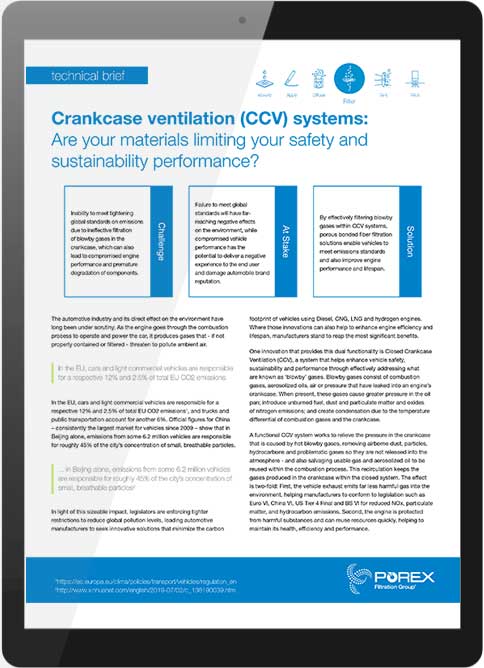Why download the tech brief:
- Understand the challenges and risks associated with poor material performance in CCV systems that are contributing to air pollution
- Discover how a functional CCV system can relieve pressure in a crankcase, preventing airborne dust, particles, hydrocarbons and problematic gases from being released into the atmosphere while recycling oil within the combustion process
- Learn why proper CCV system filtration can help maintain oil levels that protect engine components, maintain high engine performance and promote engine life

Please download the tech brief by filling out this short form:

